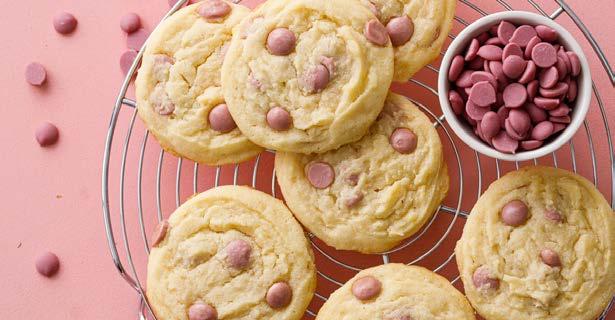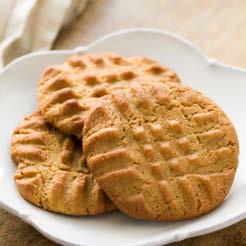
4 minute read
Follow the recipe
from Baking Science
by welchkn1
8 Secrets to Making Perfect Cookies
by: Danilo Alfaro
Advertisement
No one expects to make perfect cookies as a beginning baker. But if you've got the basics down, don't have any bad baking habits, and are ready to take your cookie game from good to great, use these eight tips that will help you get there. But first, make sure you follow a few pieces of universal wisdom:
1. Follow the recipe.
2. Preheat the oven.
3. Don't open the oven while the
cookies are baking. If you can't see through the little window, you might need to clean it!
Now, follow these more detailed tips for tasty treats every time.
Don’t Grease the Pan
It’s simple to remember this tip. Don’t grease your pans. Greasing them can cause your cookies to spread too much, possibly merging into one giant cookie. If you’re really having trouble with your cookies sticking to your pan, there might be something wrong with it.
Check if your pan is clean and shiny or encrusted with the blackened residue of years of baking and roasting. If it’s the latter, that’s why your cookies are sticking. You can use a baking mat or a sheet of parchment paper, but you might be better off replacing the blackened pan with a new one.
Also, for future reference, greasing your pans is the primary cause of this bakedon gunk. If you break from this habit, your new pan will last much longer.
Use Light Colored Pans

Speaking of pans, your baking pans should be light-colored rather than dark. Cookies baked on dark pans will tend to burn on the bottom.
Dark sheets absorb more heat than light ones, enough that it will actually make a material difference in the outcome of the cookies. Keep that in mind when it’s time to spring for a new baking pan.
Measure the Flour Correctly
The issue with measuring flour by volume is using units like cups is wildly imprecise. The problem is further compounded by the fact that scooping the measuring cup into the bag of flour can add up to 30 percent more flour than what is called for.
The solution is to measure your flour in grams instead of cups. When a recipe calls for a cup of flour, measure out 130 grams of flour instead. A small kitchen scale is very helpful here.
Let Your Butter Sit at Room Temperature for 15 Minutes
Fifteen minutes! Not more and not less.
If the butter is too cold, it won’t cream properly and the resulting cookies will be too dense.
On the other hand, if your butter is too soft, it won’t hold enough air during the creaming process and thus produce a heavy, greasy dough rather than a fluffy one. Fifteen minutes on the counter is the exact right length of time.
Use High Quality Butter

Cheap butter can contain up to 19 percent water, which not only makes it harder for the eggs and butter to emulsify, but it will also contribute to excess spreading.
European butter tends to have lower water content and a higher fat content (which is what you want), as does butter from some small domestic dairies. Not surprisingly, butter with a higher fat content also tastes better. Whatever you do, don’t use that spreadable whipped butter that comes in a tub.
This product is high in water and as the name indicates also has air whipped into it, which will throw off everything from creaming to baking.
1. Dust your surface with powdered sugar instead of flour. Excess flour will contribute to cookies that are too

hard. (With chocolate cookies, dust with cocoa powder instead.) 2. Roll your initial dough into as uniform shapes as you can. 3. When you use your cutters, get as close to the edge of that dough, and as close to each other, as possible. This minimizes the amount of scraps you will have to re-roll, as those re-rolled cookies are usually misshapen and tough.
Handle the Dough

Gently
This is mostly an issue with rolled cookies, which is difficult since you need to use a rolling pin and that’s not exactly gentle. The more you roll, the tougher your cookies will be (due to the working of the glutens). There are a couple of things you can do to minimize this.
Don’t Rotate Your Pans
Some bakers believe there are hotspots in an oven and rotating your pans during baking will help mitigate them. The relatively minor benefit of rotating your pans is completely nullified by the fact you’ve just let all the heat out of the oven by opening the door.


